HTC has a long and varied history with Android hardware. They literally kicked off the Android Handset market with the HTC Dream / G1, and again kicked off the Nexus program with the Nexus One. HTC then redefined Android build quality for the better with the HTC One M7. Unfortunately, despite their obvious commitment to the platform, they have had difficulty in moving units in a meaningful way to make a profitable smartphone business, and in recent times just seem to be struggling to stay relevant, despite their lineage.
I’ve had the opportunity to spend a few weeks with the HTC One X9, HTC’s current mid-tier device, and one thing shines, and that is HTC’s familiarity with Android. For a ‘mid specced’ device I experienced very few performance issues; it absolutely runs rings around other mid-tier devices that I have used from a system performance/ stability perspective.
The metal unibody construction and stereo front facing speakers all combine to make the HTC One X9 a great piece of Hardware. From a software perspective I’m not a fan of Sense but with a little Android customisation, I had few issues.
So the question is, should you consider the One X9 for your next purchase? Read on to find out.
HTC One X9 Hardware
The HTC One X9, we’ll be calling it the X9 from here on out, is a solidly built handset that leverages HTC’s manufacturing expertise bringing a more premium fit and finish to the mid-tier. The 5.5” FHD device has an all aluminium back, 3000 mAh battery and stereo front facing speakers. It feels smooth, perhaps almost slippery in the hand and engenders a real sense of quality, the engineering tolerances this device are great. At $699 AUD full retail, it is at the upper end of the mid-tier category but still several hundred away from the top of the crop.
Weighing in at 170 g the 153.9 x 75.9 x 7.99 mm device feels light and manageable in my large hands, out of its case. Inside its case, it gets just a little too wide, even for me. Device size is as much personal preference as it is utility, what I want is a 5.5” display in a device the size of a 5.2” phone, what you may want may well be different. For a 5.5″ phone it feels to be the right size.
What’s inside
Alongside the better than typical design and construction found in run of the mill mid-tier devices the X9 is also leading the way with some of the internal specs. The 3GB of RAM definitely made a difference to the device and the overall performance feel of the device and the MediaTek Helio X10 processor has shown itself to be a very capable SOC. Here’re the rest of the specs by the numbers.
| Key Specifications: | HTC One X9 |
|---|---|
| Release date | December 2015 |
| Screen size | 5.5-inch |
| Screen technology | Super LCD |
| Resolution | 1,920 x 1,080 |
| PPI | 401 |
| Rear camera | 13MP |
| Rear aperture | f/2.0 |
| Front camera | 5MP |
| Front aperture | f/2.8 |
| Chipset | MediaTek Helio X10 |
| Core config | 2.2 GHz x 8 |
| RAM | 3GB |
| Storage | 32GB |
| MicroSD | Yes, up to 2TB |
| Battery | 3,000 mAh |
| Battery removable | — |
| Connector | MicroUSB |
| Headphone Port | Yes |
| Headphone Location | Top |
| Speaker Configuration |
|
| WIFI standards | 802.11 a/b/g/n/ac |
| Bluetooth standards |
|
| NFC | Yes |
| Location |
|
| Android OS | Android 6.0 |
| Vendor skin | HTC Sense |
| Dimensions | 153.9 x 75.9 x 7.99 mm |
| Weight | 170g |
| Colours |
|
Build quality
This is a metal phone with a rounded design and antenna lines. Some people are going to say it resembles some other mobile devices. At this stage if you’re making a metal unibody device with rounded edges there is going to be some design language cross over, it’s time we all just accepted that. That said this does not look like a device intended to copy anything all of the little details are different enough from most other devices.
As previously discussed the build materials and fit and finish of this device are well above what I typically see in the mid-tier device range. Admittedly this is becoming a growing trend at this level with some OEMs, so while welcome, it’s not unique. That said HTC know how to make a damn fine phone.
In what was obviously an attempt to make the buttons easier to reach on a larger phone HTC have placed them lower on the right edge, this is fine, however, they have also placed the power button on the bottom, in contrast to almost all other devices. This is just confusing when switching between devices and actually a little annoying. HTC, don’t mess with people’s muscle memory, please.
HTC One X9 Camera
On paper, the rear 13MP f/2.0 camera should be capable of shooting some decent photos, and in the right situations it can but if you want a camera that you can pull out of your pocket and have a good chance of getting a shot, this isn’t the camera for you.
The time to load feels like weeks at times and the autofocus is unreliable at best. I frequently missed shots or ended up with a blurry mess when using the device for real world shots. That’s not to say you can’t use the X9’s rear camera to grab a nice shot, you can, if you’ve got time to load the camera, frame the subject, focus, focus, focus and grab the shot, you can get some great images.
The front facing camera is competent for your typical selfie shots, but unlike some devices, this doesn’t seem to be a highlight feature. I’m ok with that and it certainly worked for my purposes.
HTC have a history of struggling with the photo taking experience in their devices. Whatever the reason the main camera in the X9 simply fails to be a reliable performer.
Photo samples
To show what you can get from the X9 with just a little effort I allowed the device time to grab the best shots it could.
Here is some example of how many of my images turned out, quick photos or low light shots are basally a no go.
You know what types of photos you take, and how important those shots are to you.
HTC One X9 Software
The X9 is running HTC’s latest iteration of their Android skin, Sense 7.0, all built on top of Android 6.0, at the end of the review period (mid July 2016) it was still on the April security patch despite getting an update a few weeks into the review. Over the years Sense has certainly moved closer to stock Android however, HTC has ‘touched’ almost every aspect of the UI from Quick Settings to the settings menu.
For some reason HTC does not allow you to customise the quick settings, this is an almost universal feature, and in many respects, something some OEMs typically do better than stock Android. It was very disappointing not being able to remove, or add or rearrange items in the quick settings. I tried all the trick I know of how to enable this functionality as was ultimately unsuccessful.
Sense Home is the core of HTC’s software experience as their primary launcher. Those familiar with Android will know not all launchers are created equal. HTC has definitely tried to create an experience with their launcher, and if I didn’t have such strong “set-up” that is the core of my workflow I could actually see myself liking elements of their launcher. The launcher has 2 differentiating features that go beyond the grid of apps and widgets.
Firstly, there is the “Highlights” page accessed by swiping to the right. Highlights is a replacement for Blinkfeed from previous versions of sense – or Google Now on the Google Now Launcher – and presents you with a customisable feed made up of sources of your choice. The second feature is their Home Widget. The Home Widget is a location based home screen that changes your icons based on location with a hefty range of customisation. I could see that if Nova Launcher incorporated a similar feature I would definitely experiment with it.
Moving on from the Launcher another interesting feature is HTC’s theming engine. Android Theming is becoming more popular amongst Android OEM’s perhaps as a way of selling the dream of ‘full customisation’ yet delivering something a little less than that. Still using the theming engine you can either download someone else’s themes (I turned the X9 into a Nexus 6P) or roll your own.
Along with other customisation options, you can change the wallpaper, fonts, icon packs, alarm and ringtones and various other UI elements.
HTC seem to have done a great job of not adding too much in the way of bloat or unnecessary apps. Unfortunately, apps such as Facebook, Messenger (FB), Instagram, Vodafone apps and Skype are preinstalled and can not be removed. Preinstalling apps is one thing but not letting users choose to remove them is a move that continues to put OEMs who do this, like HTC, in a user-hostile position. Regardless of this the device still had 23.06 GB of the 32 GB of internal storage user accessible.
There’s far more a to an Android Ski than we can cover in an acceptable length review. Suffice to say that while HTC’s implementation is improving it still has some areas for further iteration but on the whole, delivers an unmistakenly Android experience.
HTC One X9 Performance and Battery
While we’re not huge fans of the benchmarks as the ultimate decider of a good performing device, they are a good indication of relative performance in some areas. Here’s how the X9 compared to similarly priced devices easily available in Australia.
| Device | PC Mark Score | Battery Life |
|---|---|---|
| HTC One X9 | 4,447 | 7h12m |
| Sony Xperia Z5 | 5,021 | 6h51m |
| Samsung Galaxy S5 (Exynos) | 4,356 | 4h54m |
| LG Nexus 5X | 4,248 | 6h43m |
Overall the X9 performed very well. As a daily driver I never had any issues with it and never felt that I was waiting for the phone, except during reboots 0 which seemed to be related to encryption. The device easily handled all of my daily tasks and even managed a game or two.
I did experience a little unreliability with calls if I had Pocket Casts running, Bluetooth audio streaming, a game running and a call coming in. Not everytime but it did go a bit wonky every now and then, not a big deal, and certainly not the first device I’ve had go weak at the knees with that combination.
Battery life
The battery life of the X9 was a bit of a mixed bag. At times it would seemingly last all day with plenty left in the tank. However, on other days it would need frequent top ups. This seemed to be with HTC’s downtime optimisations. At rest, the device sipped power like it wasn’t using any.
However, if you were actually using it it just didn’t seem to perform as well. That said on a heavy day I was able to get from wake up at 05:30 to work and home again without it going flat, however, if I hadn’t topped up it wouldn’t last until bedtime around 21:30.
HTC One X9 Connectivity
The X9 came with your stereotypical range of connectivity. Dual Band WiFi 802.11 a/b/g/n/ac, Bluetooth 4.2 with LE and A2DP, LTE (suitable for all Australian mobile networks) and all of the global positioning you’ll ever want.
But does it have NFC…… yes, yes it does, and just in case you’re interested Android Pay (and other mobile payment systems) worked great. From a connector standpoint, the X9 has stuck with a MicroUSB connector and has maintained the 3.5mm headphone jack. Everything else is pretty much how you would expect it to be.
HTC One X9 Conclusion
Overall the HTC One X9 is a solid performer providing a great user experience in a nicely made device. The software is serviceable and the customisation built into both Android and to Sense allows you to really tweak most of the device just how you like it.
At $699 AUD retail – or next to nothing on a Vodafone plan – the device is at the upper limits of what I would call mid-tier. For the same money there are competing phones worthy or some consideration, however, the performance on this one is solid. The big negative must be the camera, it was only a few years ago this was status quo on flagship phones and it looks like those improvements just haven’t broken through to the mid-tier in a reliable way yet.
The inclusion of NFC is important as service such as Android Pay going live in Australia with more institutions coming online, at this stage, I just won’t be highly recommending any device without it,
If you were looking for a phone for no more than $700 AUD and a fast camera was not on your must have list I’d be more than happy to recommend you check out the HTC One X9.


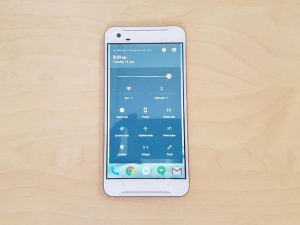

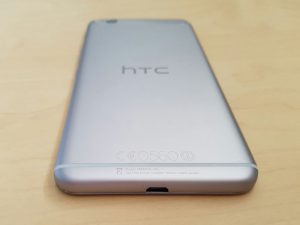
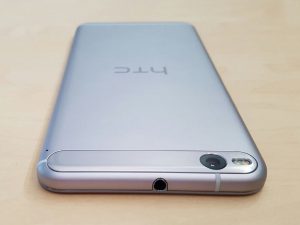
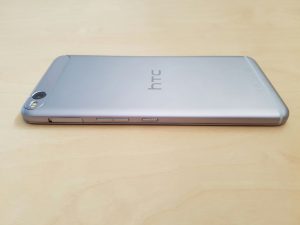
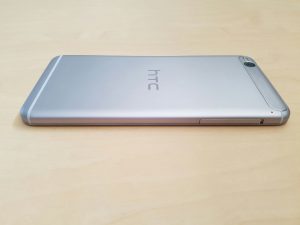











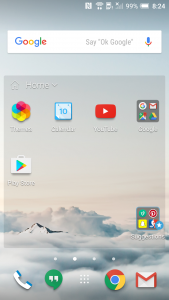
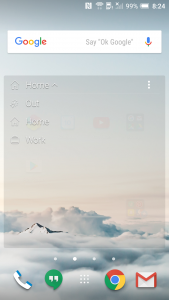


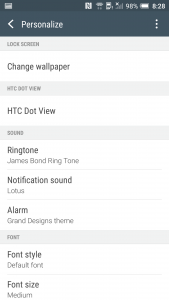
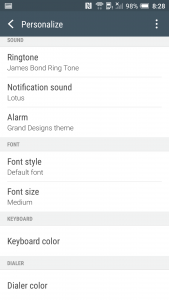
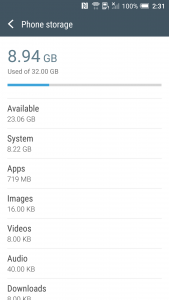

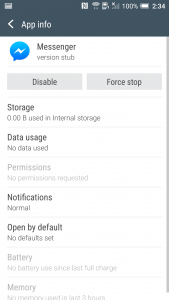



it is removable the battery?